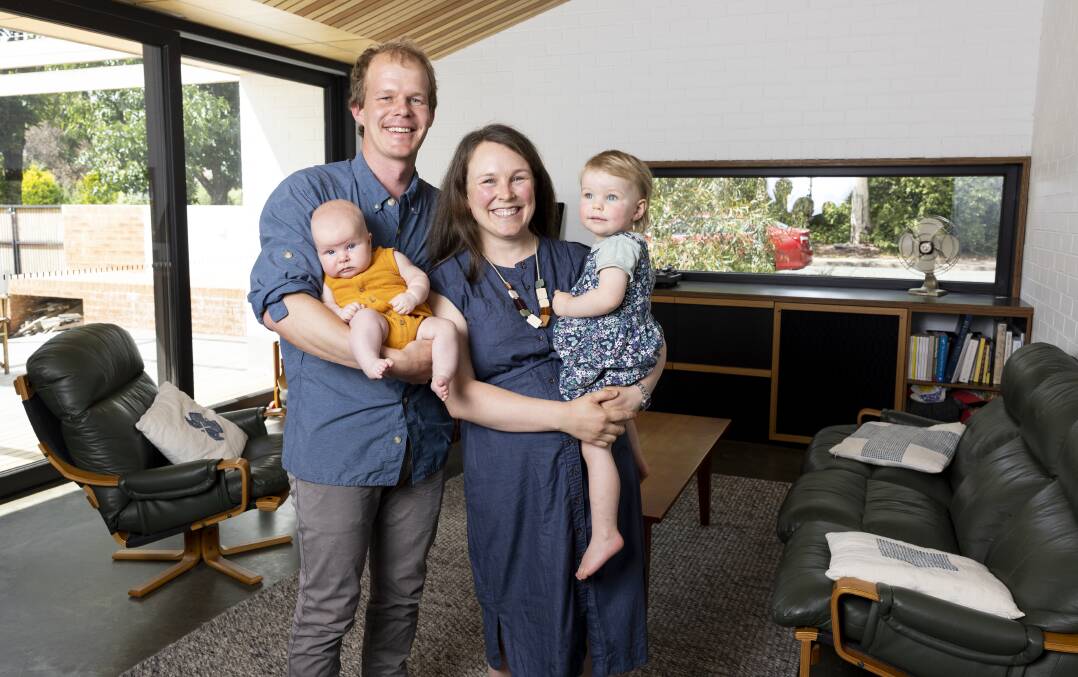
The Lavis and Lord family haven't been out of pocket for their yearly energy bill since moving into the home they built in Watson two years ago.
The feed-in tariff from their solar panels in summer covers the small amount their panel heater costs over winter. The all-electric home uses passive-solar design principles to achieve an 8.2 star energy rating, including northern orientation for its main living spaces.
Mark Lavis, a high school teacher, built the house - known as the Magpie House - with his dad, a builder, to replace the ex-govie the family purchased years earlier.
Building the three-bedroom, two-bathroom home set them back $375,000, but it was also two years without a wage for the father and son team.
Completed in 2020, the Watson house comes with uPVC double-glazed windows, as well as mechanical ventilation and insulation.
A key design principle, aimed at lightening its footprint and cutting costs, was keeping the house to a relatively compact 180-metre-squared. Its master bedroom was built to allow a dividing wall to be installed once there's no longer a baby in the house and wardrobes were left out of bedrooms to make repurposing them easier when they're no longer required.
"The fundamental layout of the [original] building was so compromised on the block that trying to mediate it was more effort than starting again," Mr Lavis said.
"By pushing the house to the southern boundary, we've got all our living spaces and all the bedrooms on the northern side, which means you get lots of free heating in winter when the sun's low in the sky.
"In summer, at the moment, the sun doesn't really come in the house at all."
The hardwood timber from the old house was reclaimed for benches and future projects, while all the old windows were diverted from landfill.
The Magpie House is one of four Canberra homes taking part in Sustainable House Day, albeit online through virtual tours. Mr Lavis is responding to questions online related to sustainable builds.
Sustainable House Day
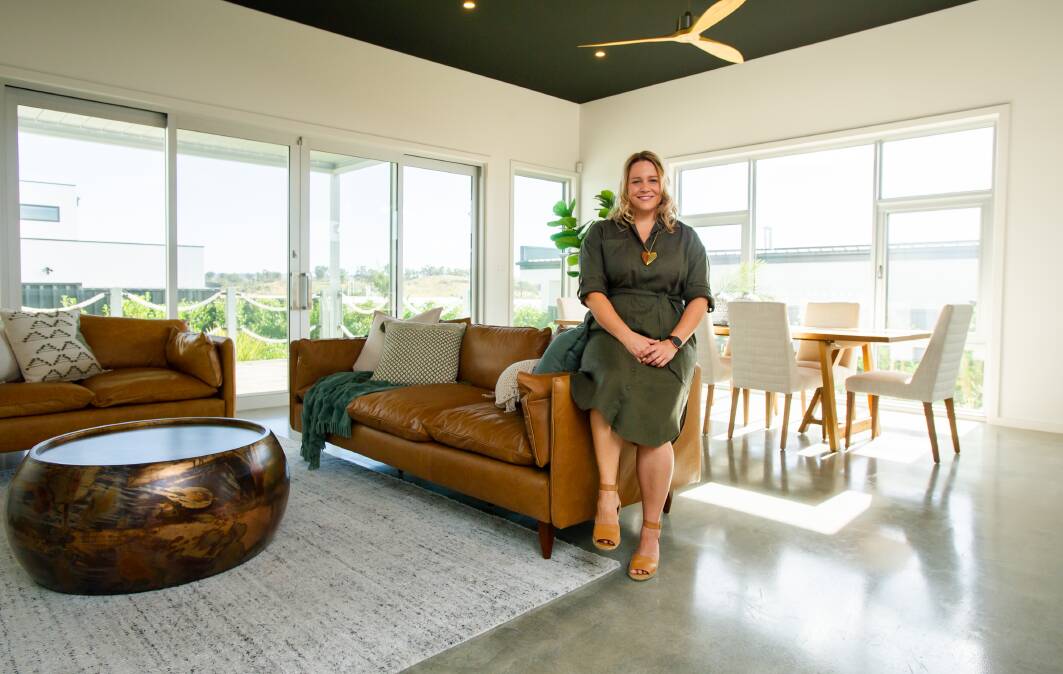
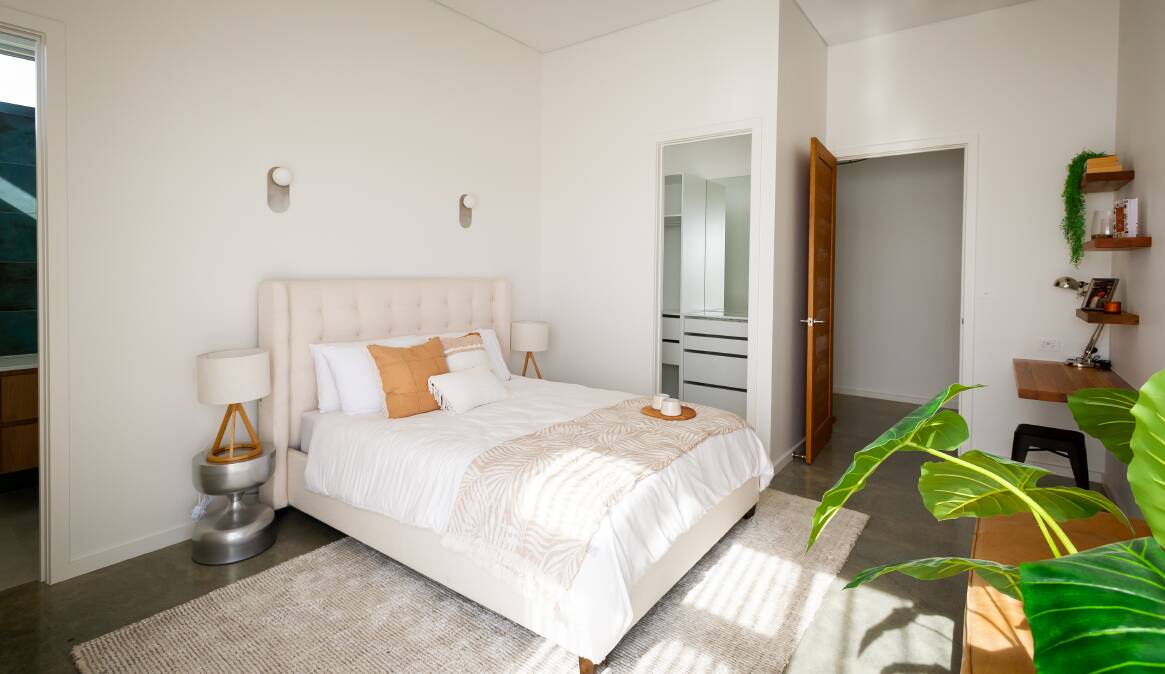
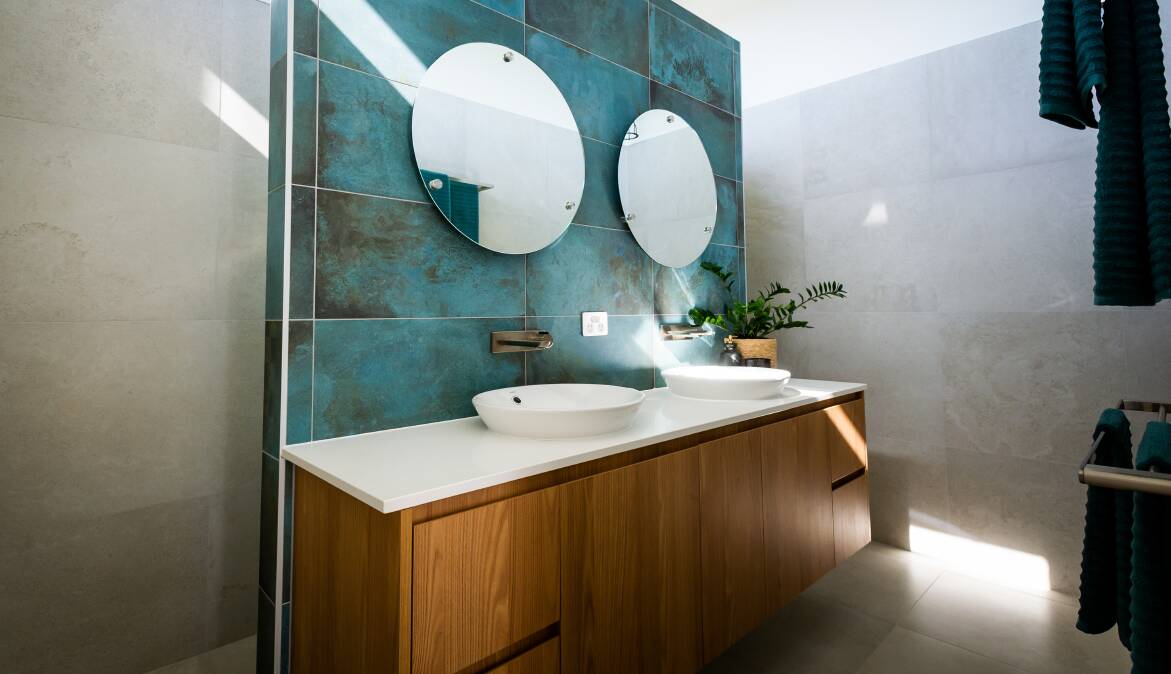
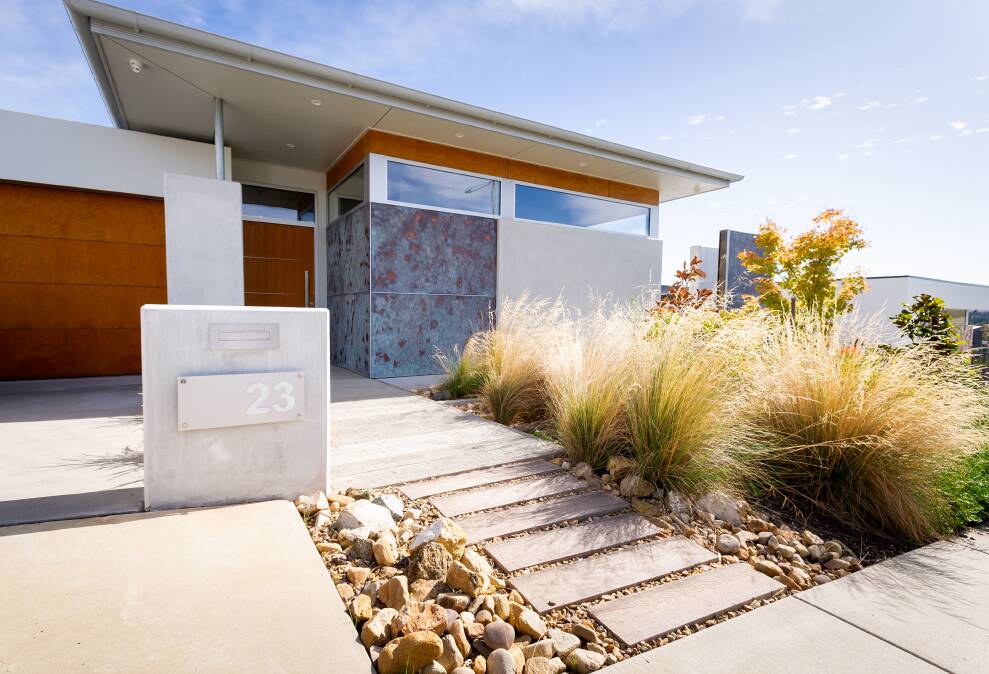
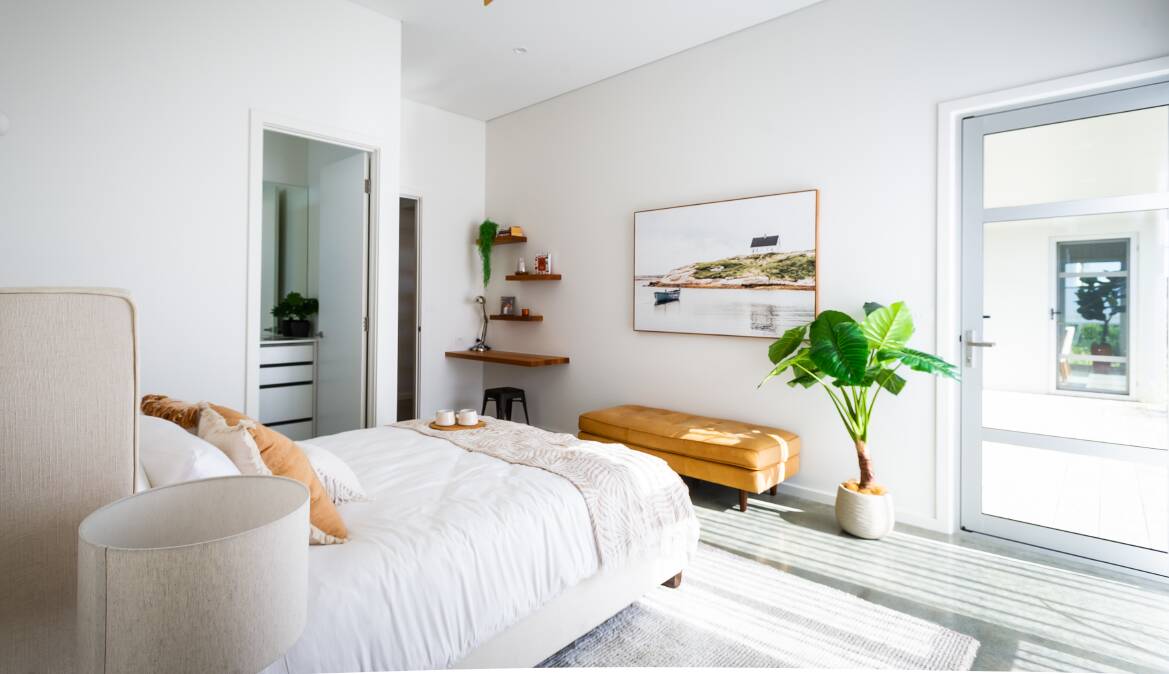
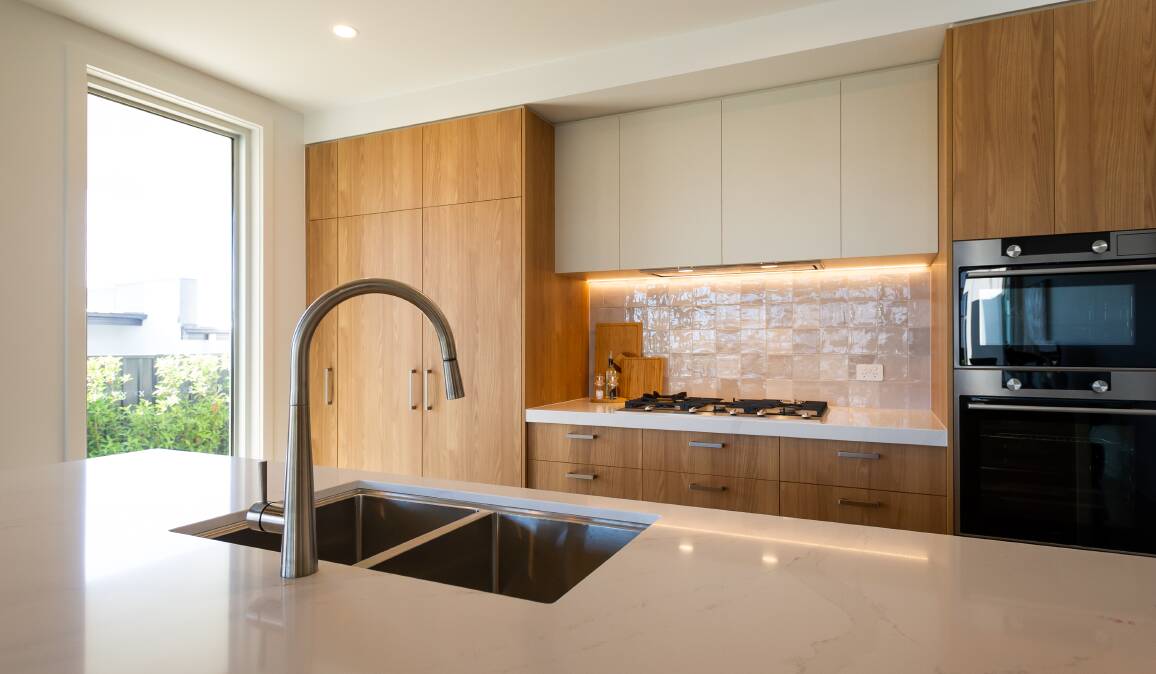
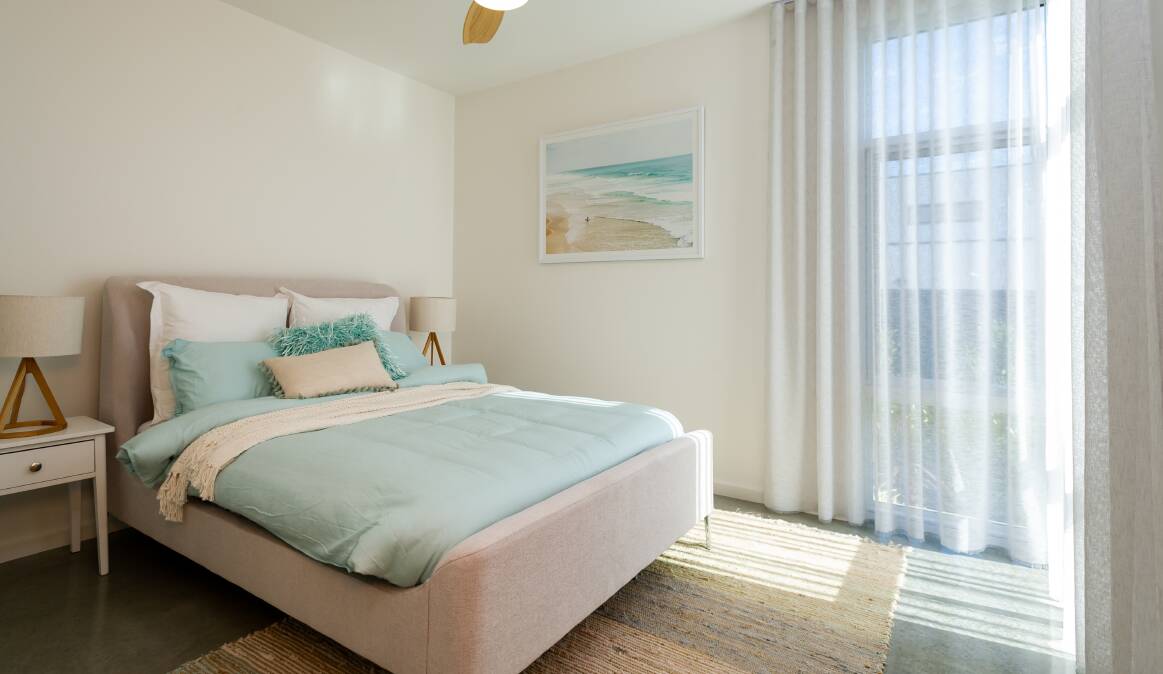
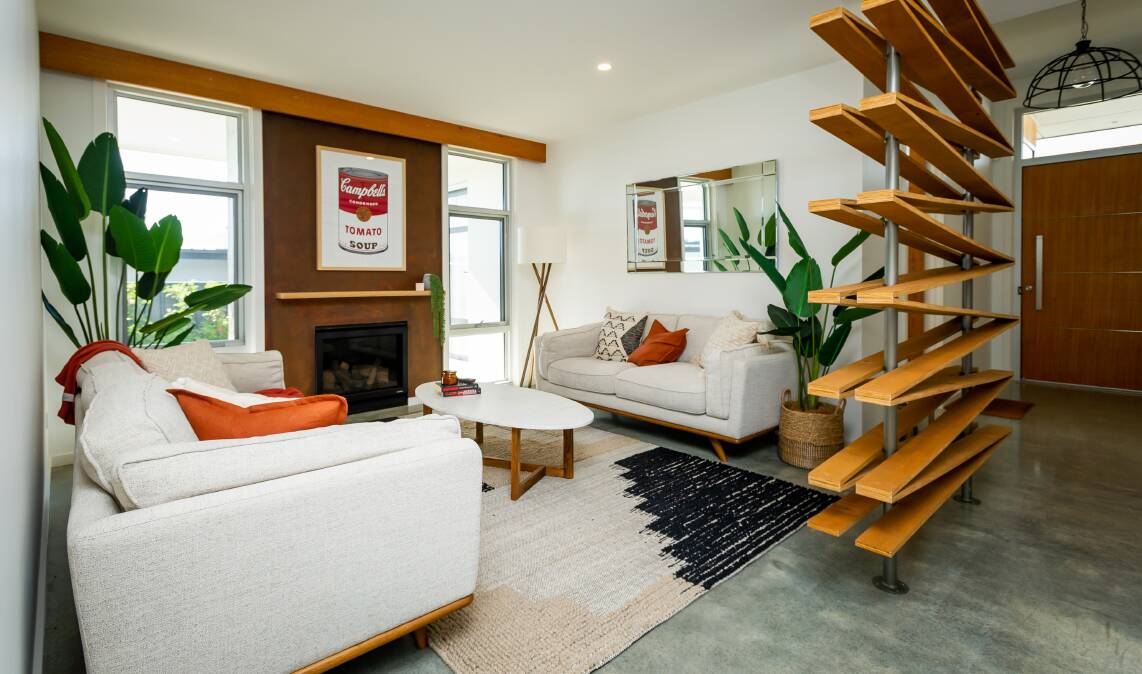
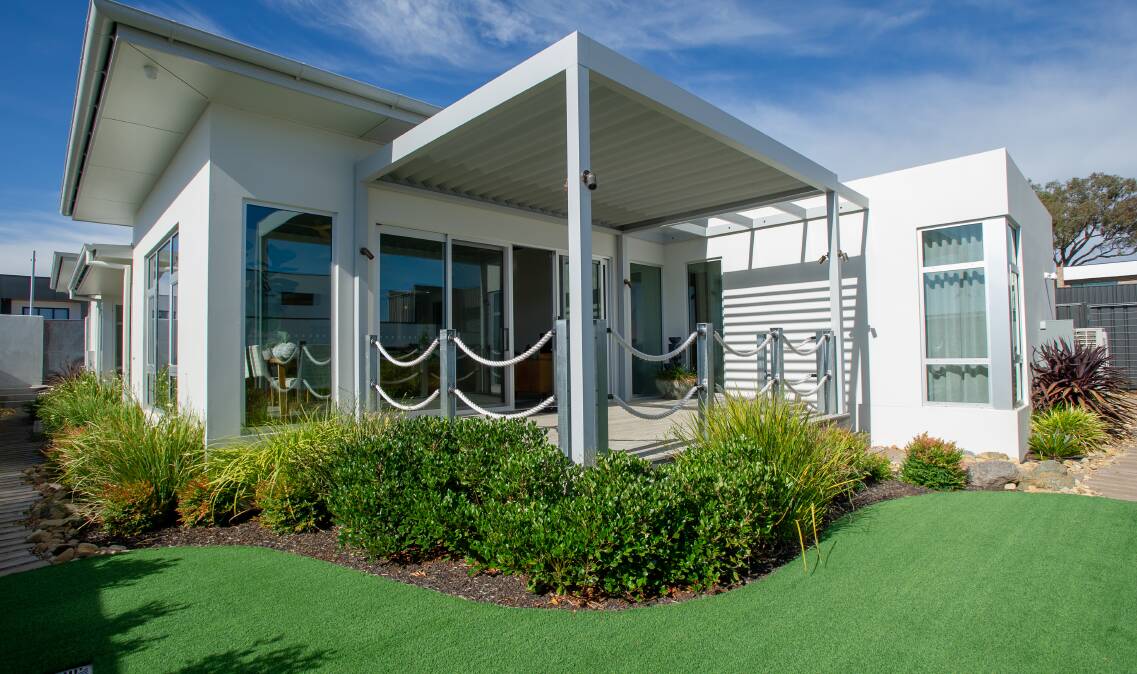
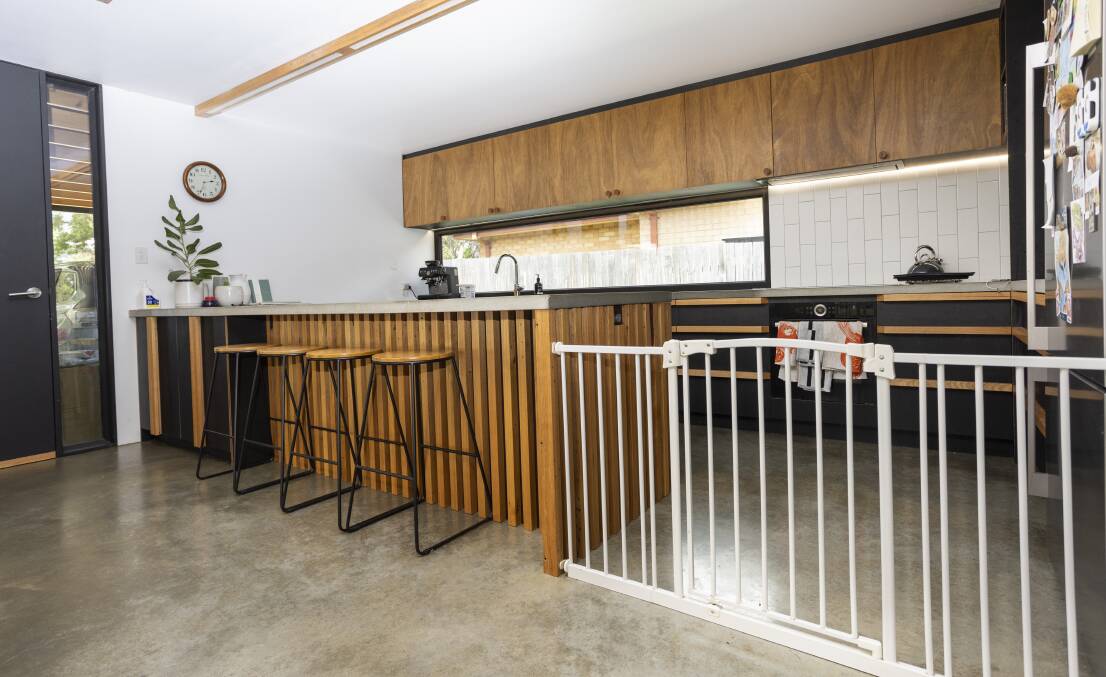



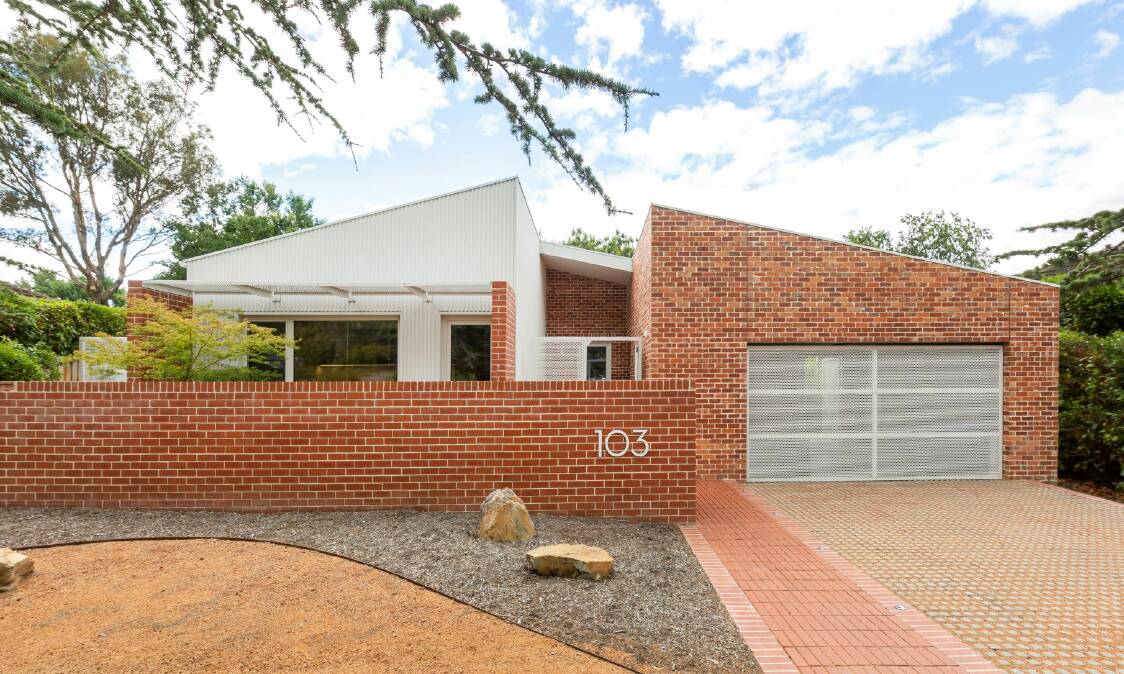
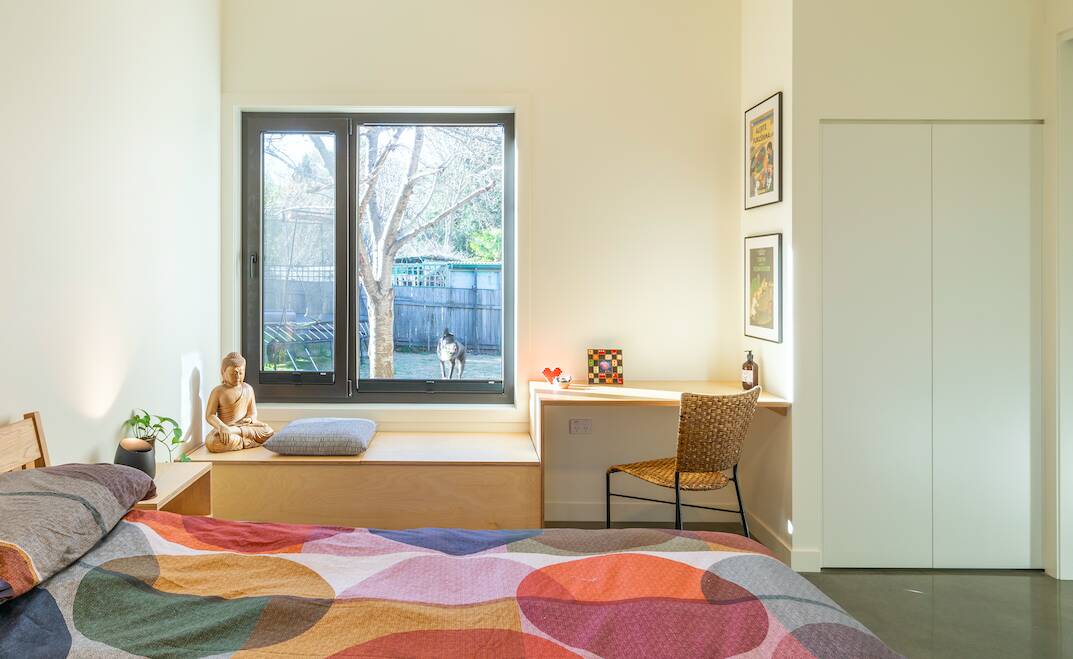
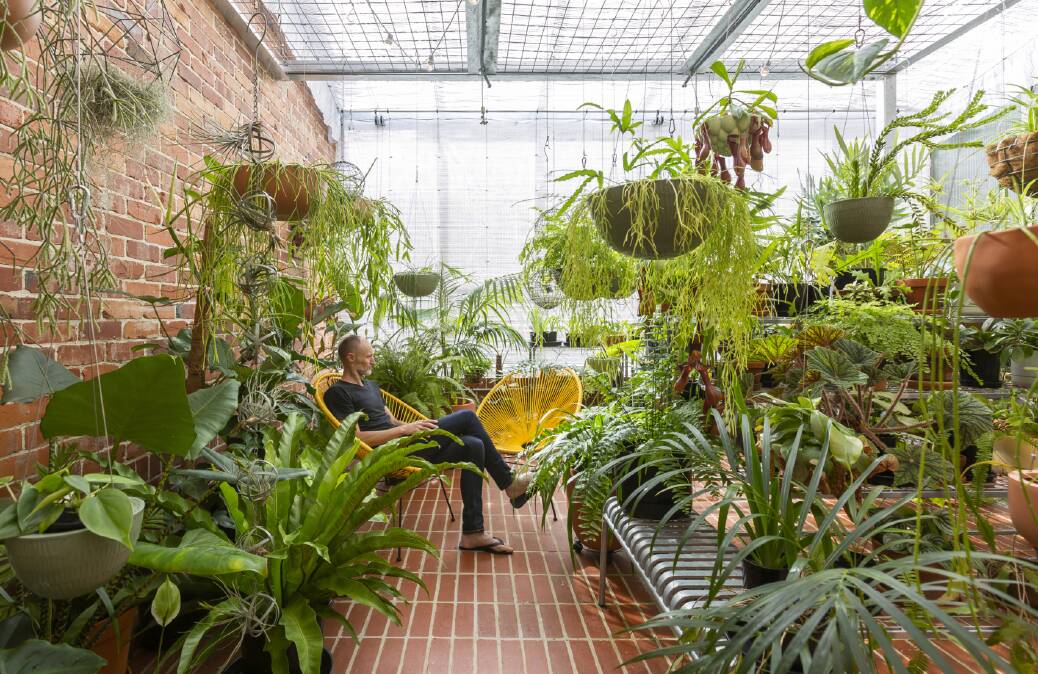
The Edwin in Coombs, a display home by Regal Homes, is the only Canberra home that will open to the public on Sunday, from 10am to 4pm.
Built to take in views of the Molonglo Valley, the home demonstrates energy efficiency is possible without perfect north orientation.
At 291 square metres, the four-bedroom, two-bathroom home cost $825,000 to build in 2020. While it's not yet on the market, its estimated sale value is around $1.5 million.
The living area is designed to catch the north sun and a burnished concrete slab throughout provides geothermal mass.
Managing director Natasha Stoka said the floor soaks up the heat when the sun comes in during the day in winter and it is radiated back up at night.
There's hydronic heating and cooling in the floors and ceiling fans are dual action to pull cool air up in summer and push down the heat. All the wall wraps are taped and sealed to minimise air leakage.
Architect Michael Piscone designed it with a main outdoor space off the living room with rotating roof slats to let in or shut out the sun. A second outdoor space off the main bedroom gets the morning sun.
Ms Stoka is in the process of building a home in Murrumbateman and said some sustainable practices had evolved since building the Coombs property. For instance, the Coombs kitchen comes with a gas cooker.
Her experience is that most people would prefer sustainable building practices, but are often stymied by cost.
"Developers are becoming more aware of north and the importance of having most of their blocks facing north, but it's a bit hit and miss," Ms Stoka said.
"... As the industry shifts, these things will become more accessible and cheaper for most people to do.
"It's an old industry and it's slow to move. But I feel like there's certain people, like Jenny from Lighthouse, with that kind of ingenuity and proactive sort of behaviour that will sort of drag the rest of the industry along kicking and screaming."
Creating cheap sustainable homes
Sustainable design pioneer, Canberra's Light House Architecture and Science director Jenny Edwards will be presenting one of eight free online sessions on Sunday, about creating sustainable homes on the cheap.
The discussions will focus on things like finding the best EV charging setup, purchasing land and building homes as a community collective, designing and planning for ageing, and building homes on a budget.
Sustainable House Day organiser Renew has also created a program of online sessions on eight key areas of sustainable building and design, running over the next month.
From drafting the initial concept and seeking planning permissions right through to what solar panels to use, the sessions are designed to provide access to experts.
Passivhaus homeowners like Michael Tolhurst, from Envelope Architecture in Canberra, are also answering questions about their homes.
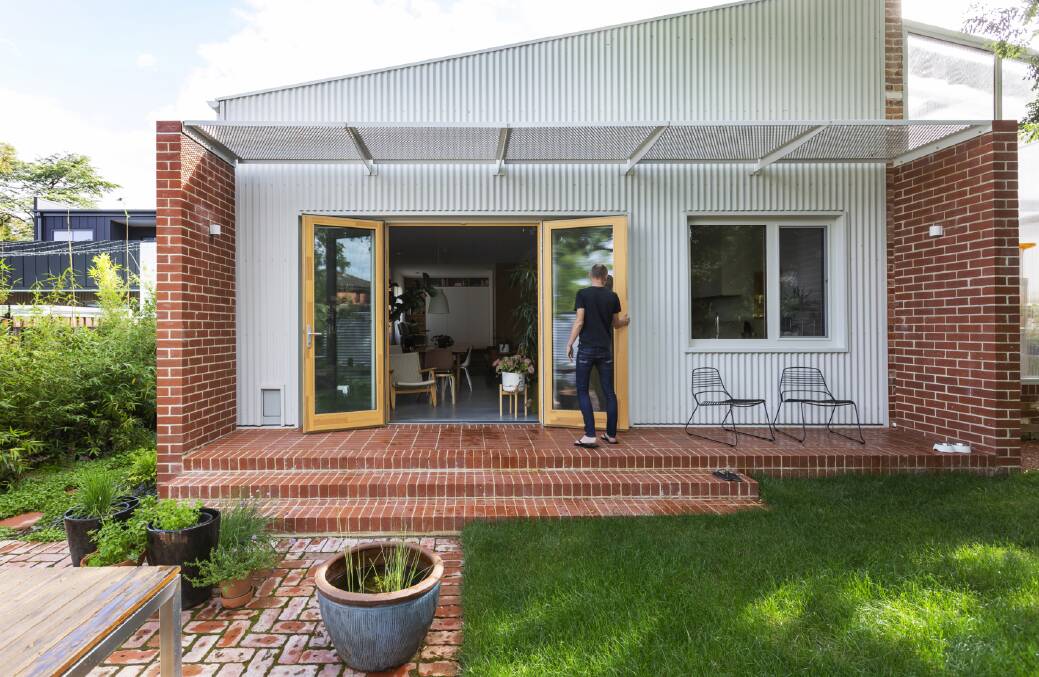
Mr Tolhurst and his wife Lisa knocked down a 1940s redbrick workers' cottage to build Narrabundahaus, completed in 2021.
The build didn't come cheap, costing more than $1.1 million. It includes a greenhouse capable of growing tropical plants and doubling as a living space in the colder months.
The Narrabundah home has just received Passivhaus Plus certification, meaning it includes best-practice heating, cooling and air quality while also being energy efficient.
More than 10,000 Canberra-made bricks from the original cottage were salvaged and reused, a time-consuming task that contributed to the house taking about 15 months to complete.
Technically a one-bedroom home - at the moment - the house is designed with multipurpose rooms that give it up to three bedroom.
They paid more to recycle the bricks, use concrete that included recycled aggregate, and use water instead of an excavator to extract soil from around the roots of trees.
Mr Tolhurst said it was a very challenging process that paid off.
"It's definitely a love-hate relationship. I'm sure anyone who builds their own home and is really acutely involved in the process would agree with that," he said.
"We certainly get a lot of joy and a lot of pleasure living here at the moment."
We've made it a whole lot easier for you to have your say. Our new comment platform requires only one log-in to access articles and to join the discussion on The Canberra Times website. Find out how to register so you can enjoy civil, friendly and engaging discussions. See our moderation policy here.
!["[T]he First and Fifth Amendments Require ICE to Provide Information About the Whereabouts of a Detained Person"](https://images.inkl.com/s3/publisher/cover/212/reason-cover.png?w=600)






